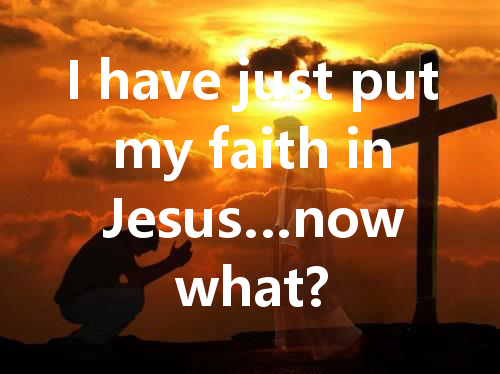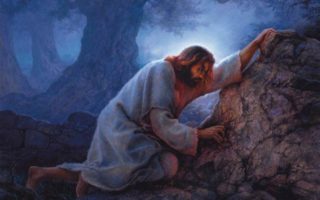From the Old Testament to the New Testament, we see many instances where light and darkness phrases are used both in a literal and metaphorical sense. It is a developing theme that runs throughout scripture and is symbolic of an ethical duality. Light is often used as a symbol of the saving presence of God in a world of sin. Darkness, however, is used as a symbol of sin or the absence of God. In Genesis 1:3, God commanded, “”Let there be light,” and there was light.”
In the physical sense, light provides illumination, allowing a person to make visual distinctions between objects, colours, etc. Darkness, on the other hand, is the absence of light and the result of this on a person is disorientation, distortion, and confusion. In scripture, this theme of light and darkness is often applied figuratively, usually as opposites, such as light symbolising knowledge or understanding, whereas darkness represents ignorance and confusion. It is also used to make spiritual comparisons.
Light is always considered as good in all aspects. Beginning with the physical, where we receive light from the sun, moon, stars, etc.
Likewise, in the spiritual sense, the light of the moral law of God guides us. Psalms 119:105 says, “Your word is a lamp to my feet and a light to my path.” Light and darkness in the Bible are frequently employed to depict moral or theological concepts. Light refers to God’s nature and essence,  used to describe positive or negative morality, indicating an understanding or ignorance of truth or knowledge. 1 John 1:5 says, “This is the message we have heard from him and proclaim to you, that God is light, and in him is no darkness at all.”
God brings light into the world, bringing salvation and revealing his knowledge, wisdom, and truth. He provides this to the world by bringing truth through his written word. In John 8:12, Jesus says, “I am the light of the world. Whoever follows me will not walk in darkness, but will have the light of life.” The theme of spiritual blessing, truth, and righteousness is a fundamental metaphor for salvation in both the Old and New Testaments. Psalm 43:3 says, “Send out your light and your truth; let them lead me; let them bring me to your holy hill and to your dwelling!” Again in Isaiah 9:2, we see the declaration of God’s salvation in terms of light, saying, “The people who walked in darkness have seen a great light; those who dwelt in a land of deep darkness, on them has light shone.”
Often, those who walk in the way of the world are described as walking in the darkness. Even in the OT, Isaiah the prophet requests the people to walk in the light. Isaiah 2:5 “O house of Jacob, come, let us walk in the light of the Lord.” When someone walks in the light, exhibiting godly and moral behaviour, they are in the right relationship with God and are called “children of the light” (Ephesians 5:8-10). When we walk in the light, we live in a manner that is in accordance with God’s truth in His word. As a result, we will experience the benefits and blessings of God’s favour.
On the other hand, those walking in darkness are not associated with walking in the truth. It is doing all those things that are detestable to God and denying the way of Christ, including making false claims of having fellowship with God (1 John 1:6–10; 2:9–11). Darkness refers to sin and opposition to Jesus.
Darkness symbolises the judgments concerning the coming of the Lord (Isaiah 13:9-10; Matthew 24:29-31) because the works of darkness are impure actions producing unfruitfulness (Ephesians 5:11). Those who are unfruitful and are worthless servants of the Lord get thrown outside into the darkness where there will be weeping and gnashing of teeth. This darkness is symbolic of death and judgment because the outer darkness refers to the streets in the East (in those days), which were never lit up by any lamps after nightfall. It is a symbol of misery and adversity.
Jesus Christ, the light of the world, came to lead people out of spiritual darkness. Though people would reject Jesus’ message (John 3:19), Christ instructed His disciples to continue to walk in the light rather than to be misled into spiritual darkness. John 12:35-36 says, “So Jesus said to them, “The light is among you for a little while longer. Walk while you have the light, lest darkness overtake you. The one who walks in the darkness does not know where he is going. While you have the light, believe in the light, that you may become sons of light.”
1 John 2:9-11 also contrasts those in the light and those in darkness, saying, “Whoever says he is in the light and hates his brother is still in darkness. Whoever loves his brother abides in the light, and in him there is no cause for stumbling. But whoever hates his brother is in the darkness and walks in the darkness, and does not know where he is going, because the darkness has blinded his eyes.”
In conclusion, when used together in scripture, light and darkness are often used symbolically to describe the opposite ends of a good and evil dualism. When this symbolic language is used in scripture, the reference must be assessed based on the context of the passage, but the fundamental meaning of the dualism remains throughout scripture from the Old Testament to the New Testament.



